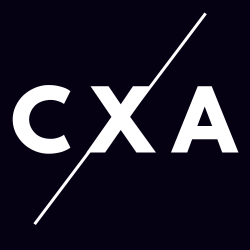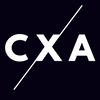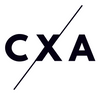The marketing lesson in hand hearts

Welcome to CXA's newsletter.
What is this newsletter? It's about marketing, consumer behaviour, AI and will always include useful marketing chart. We're getting this out about once a week. If that sounds like something you're interested in, please subscribe for free.
In summary:
- The power of symbols: Hand hearts - started in KPOP and K-Drama now beloved worldwide.
- Shopify's Annual Report: customers trading down due to cost of living.
- Chart of the week: Video creation and distribution ecosystem.
Like this post? Want to be the first to get more like it? Subscribe to our newsletter for free.
In need of a digital agency to take your business to new heights? We can help.
The Olympics has been dominated by one symbol - hand and cheek hearts
It has been wonderful to see Olympians celebrating their success or failure in so many ways. From fist pumping to clumsily un-translated moments that anyone who can lip-read knows how the athlete is verbalising their happiness a gamut of enthusiasm has been on display.
Perhaps best and most widely of all though is the symbol of hand and cheek hearts. But sport is not where the symbol began. Cheek hearts and hand hearts have been made by hundreds of athletes to their family, friends, coaching staff and supporters in stands. It is an endearing and wonderful way to show love and appreciation when being able to verbalise something isn't possible.
But hand and cheek hearts didn't start in sport, they have their humble origins in South Korean TV dramas and music. When exactly is hotly contested - with some on Reddit claiming it started in 2022 with WSJN's Luda (below), while others point to another K-Pop star, Taehyung in 2017.
As marketers we might never really know exactly when, where or how a moment in creative might be more widely beyond its original context and adopted into broader communities. Iconic lines such as 'Not. Happy. Jan!', a girl shrugging as she asks 'Por qué no los dos?' or 'Dale dug a hole'.
We have deliberately not mentioned the brands and film the lines above come from because we are so confident you, dear reader, know them already.
The takeaway for marketers is that while we may never know when or if lightening will strike, we can be confident that truly great creative is often rewarded with a life well beyond its intended tenure.

Shopify: Cost of living is forcing customers to trade down
Customers aren't stopping shopping, but they are looking for deals - that's the takeaway from Shopify's annual report.
Every marketer and ecommerce store owner should take note and be all too happy to take on every piece of advice to maximise the coming holiday season.
- 79% of Australians are cutting down on something to save money.
- 92% of customers would become loyal to a brand, if incentivised, most notably consistently low prices.
- 43% of Australian consumers now say they prefer shopping instore, up from 38% the year prior.
- 25% say they like shopping online and instore.
- 99% of retailers plan to invest more on innovation, data and analytics.
Black Friday in 2024 is sure to be an even more cut-throat opportunity that for many ecommerce businesses could make or break the year. As we recently highlighted while Black Friday itself isn't until the end of November customers start thinking about Black Friday from the middle of August - next week! If you're looking for customer insights about your business or vertical, pop by our online store to see if we have a consumer report right for you.

Chart of the week: The video creation and distribution ecosystem
The saying in carpentry is 'measure twice and cut once', but for online video the saying should be 'create once, cut a thousand times'.
Short format videos may be getting all the headlines, but it's streaming and long format video is arguably the best format for creators and brands to create in.
Longer format videos and streaming enable re-purposable content that can be edited many times, reaching many more people and eyeballs.
The way we described short form video content for brands is to think of them as the snappy sub-headlines in press releases - the zingers, the one liners you want to really put up in lights.
By linking back to the longer format video it doesn't absolve the brand entirely of risk of the standalone statement being made, but it certainly provides more comfort and context, in so far as by linking the short-form video back to the longer format video the brand has the opportunity to clearly show there is more depth to the 'short' piece of content.

Like this post? Want to be the first to get more like it? Subscribe to our newsletter for free.
In need of a digital agency to take your business to new heights? We can help.




Leave a comment